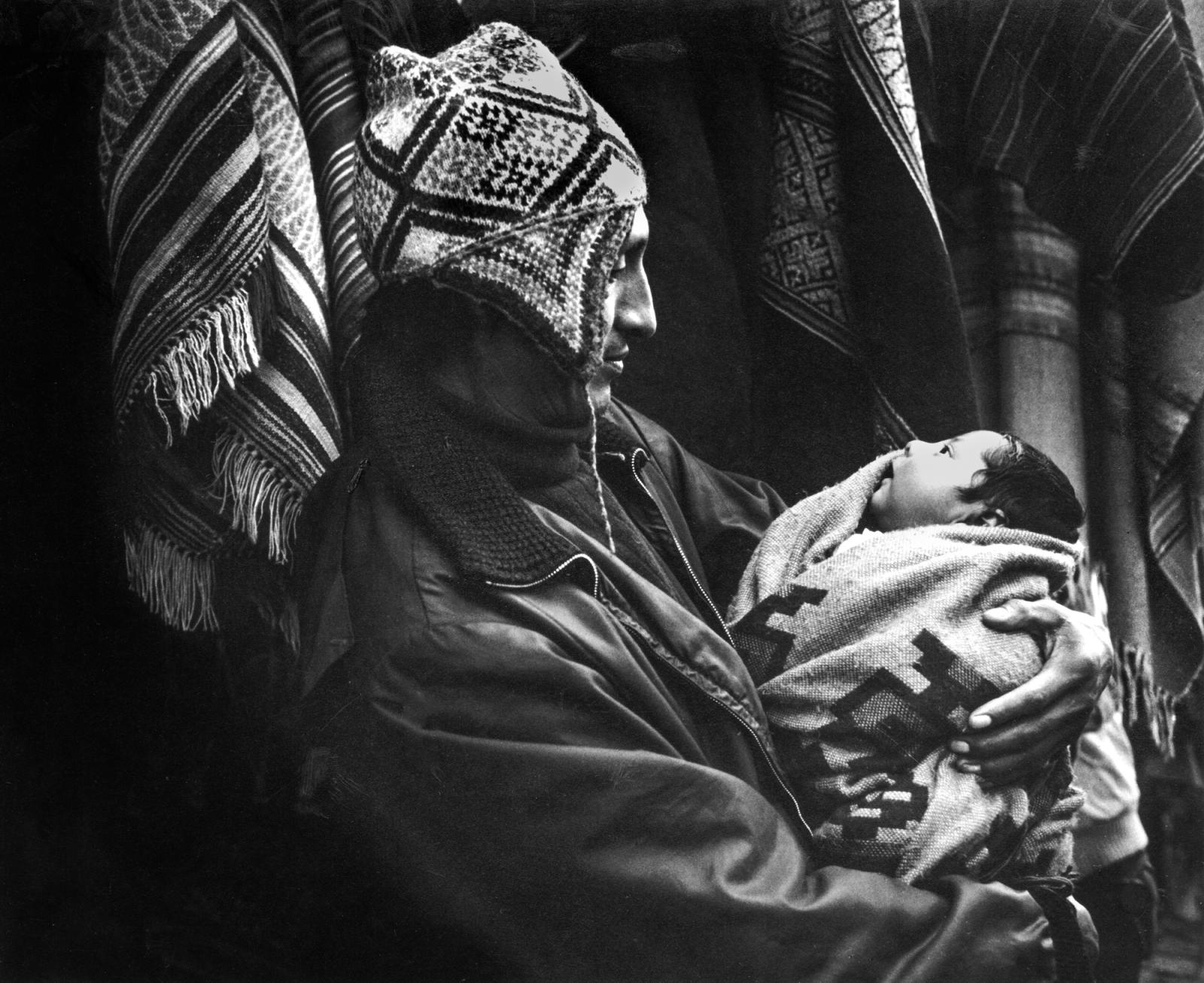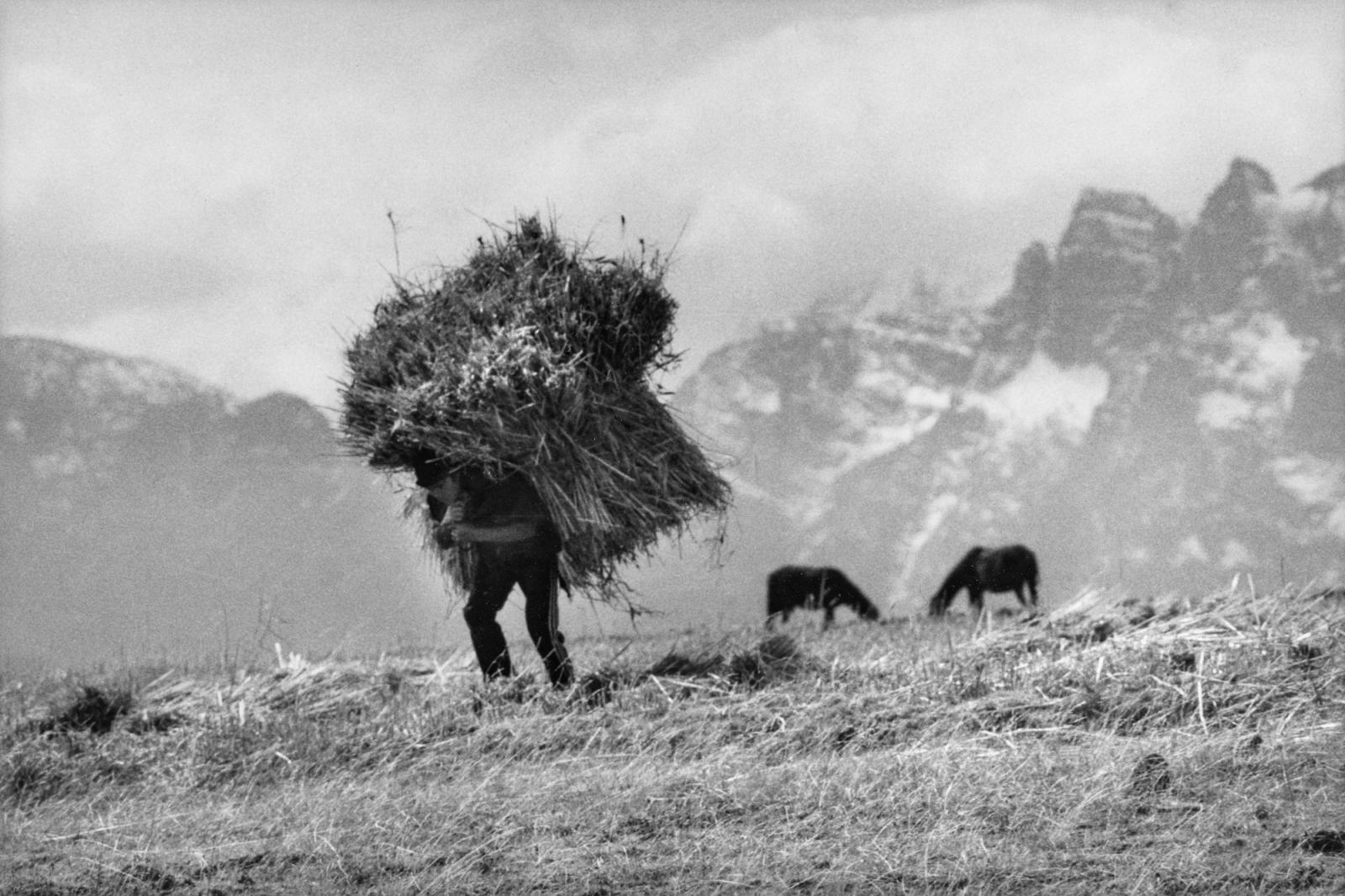In the high Andean valleys near Morococha, thousands of peasants lived who still retained their ancestral language, Quechua Huanca, and their customs from before the Inca Empire. These campesinos still used traditional tools and thousand-year-old technology to reap a meager harvest of potatoes, wheat, and corn. These crops served simultaneously as a basis for the peasants' subsistence and as a source of income. But twentieth-century industrial capitalism came to determine the destinies of these men and women. Traditional communal land tenure systems began to disintegrate as the newly expanding mine interests and agrarian estates confiscated their lands, leaving the landless with only their labor to sell.
For two years, I traveled between Morococha and the miners' hometowns throughout the Peruvian highlands. I've continued to photograph their lives and culture.
With their bare feet, out in the campo, they touched the earth. They threshed wheat, stomping on the ground to separate it from the chaff. Their feet were caked with mud, the skin, tough and cracked like fossils.
They wore no shoes, just ojotas, sandals cut from tires which they used throughout the cold winters. When they made adobe bricks for their houses, they were ankle-deep in mud, kneading the earth with their feet, pounding the ground with ferocity. They had no other tools but their own bodies, their sweat and smells. They trusted them, the way they knew the land. They were accustomed to walking for days to get somewhere. If there were no trucks, no rides, their feet would get them there—eventually.
Under the earth, the miners’ wet feet trudged long distances in the underground tunnels. Water was falling on their heads; noise deafening their ears. Young girls gathered at public spigots to wash their boots, erasing all traces of their labor. The contaminated water was only good for hosing down their boots.
The salt mines of Maras originated in a spring called the “eye of water.” The apus, spirits of the mountains, caused it to crystalize and form salt deposits. The legend told of St. Cosme and St. Damian fallen asleep by the road while carrying much needed salt water to distant Lares. St. Francis, the patron saint of Maras saw them. He was concerned for his own people and the poor village’s need for salt. He poured out the salted water of the sleeping holy men and its magic became the source of a permanent, ever-flowing spring.




















